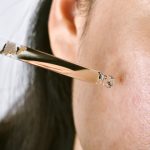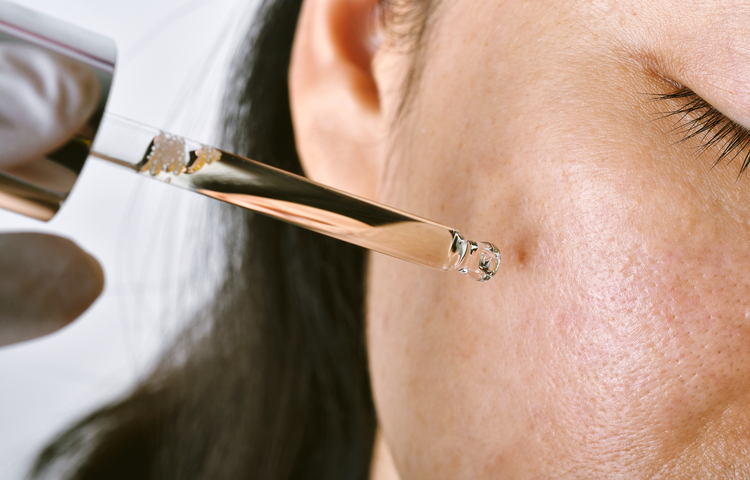Optimizing Retinol Efficacy: A-Class Derivatives Formulations
Research

Retinol formulations can be prepared in form of creams, lotions, gels, serums, or oils. Nevertheless, it is necessary to formulate each type with the appropriate compatible ingredients, according to the intended skin type usage.

Retinoids refers to a family of compounds which are derivatives of Vitamin A and exhibit functional or structural similarities to it. These molecules regulate gene expression and several critical biological pathways through interaction with nuclear receptors.Thus, receptor selectivity i.e., binding with retinoid-X receptors (RXR-α, -β, -γ) or retinoic acid (RAR -α, -β, -γ) is another characteristic feature of retinoid family members which distinguishes them from other compounds exhibiting similarities to Vitamin A. Based on this receptor selectivity and molecular structure, they are classified into 4 generations and retinol is a member of first generation which does not act selectively. Retinol, the first-generation representative, is considered a very mild form with no potential teratogenic toxicity associated with other retinoid members. Thus, retinol and its derivatized ester forms can be safely used in skincare products without the need of clinical prescription.
Following topical administration, the inactive form i.e., retinyl esters are converted to retinol by esterase which is converted to active form i.e., retinoic acid by sequential action of dehydrogenases in a 2-step oxidation pathway.

Counteracting Photo-aging with Retinol
Mostly the cosmeceuticals are constituted by retinyl esters, retinol or retinaldehyde due to safety compliance and serve as viable alternative to other stronger forms like tretinoin, tazarotene, tazarotene. The multi-faceted benefits of using topical application of retinol include:
Boosting epidermal proteins production
Increased production of collagen and elastin
Accelerated epidermal turn-over
Induced hyaluronic acid production
Inhibition of matrix metalloproteinases (MMP)
Anti Comedogenic effects by regulating sebaceous glands ducts
All above functionalities lead to improved skin texture with even skin tone, enhanced radiance and firmness. Many skin concerns like photo-aging, age-related skin wrinkling, clogged pores, dark spots can be treated with retinol and generally, the retinol concentration varies between 0.0015- 0.3% in cosmetic formulations.
Limitations in formulating Retinol products with optimal efficacy
The creation of effective retinol skin care products suffers from many limitations from formulation perspective.
Poor solubility in aqueous solutions
Since retinol is a lipophilic compound, it exhibits poor solubility (0.21 μM at pH 7.3) in aqueous solutions. This restrains its smooth incorporations in creams or lotions. These products do not exhibit uniform distribution and eventually retinol will precipitate out as insoluble aggregates. To improve the solubility, solubilizing agents or retinol derivatives are popularly used, but these ingredients if not mutually compatible can compromise the overall stability, efficacy as well as aesthetic experience.
High sensitivity to various stimuli leading to lack of stability
Majority of the retinol formulations suffer from lack of stability due to sensitivity to oxygen, light, pH, temperature, heavy metals etc. Thus, it becomes very necessary to formulate retinol products in such a way that they are protected from these denaturants right from manufacturing, to storage and usage.
Inability to cater to different skin types with the appropriate formulation
Retinol formulations can be prepared in form of creams, lotions, gels, serum or oils. Nevertheless, it is necessary to formulate each type with the appropriate compatible ingredients, according to the intended skin type usage. For instance, retinol mixed with carrier oils are generally not suitable for acne-prone oily skin while gel formulations will not provide any moisturizing effect if used on dry skin.
Relying on conventional delivery systems for retinol applications
The topical conventional delivery systems in form of creams, lotions, ointments, emollients for delivering actives like retinol suffers from many drawbacks. The prominent limitations include poor penetration through stratum corneum, lack of regulated release, denaturing of actives due to absence of protected environment, precipitation or phase separation.
A narrow therapeutic window
Determining the optimal concentration and form of retinol remains very critical for achieving the desired results. Since, retinol is a mild member of retinoid family, it is much less potent at low concentrations as compared to its more aggressive counterparts. For instance, it is 10 times less potent than tretinoin, which means a 0.02% tretinoin dosage can only be replaced with 0.20% retinol. However, very low concentrations of retinol might not be effective in providing desired therapeutic effect in specific skin conditions while high concentrations may cause erythema, irritation or dryness. Therefore, retinol concentration should be chosen in accordance with the skin concerns being addressed as well as the skin type of user.
What do we offer?
Our indigenously developed colloidal delivery systems ensure a tunable formulation in which retinol is homogenously solubilized and protected from external denaturing effects. Furthermore, its regulated release, enhanced penetration and appropriate packaging in various forms i.e., serum, gel, cream for different skin types lead to an effective product with a stable shelf life.